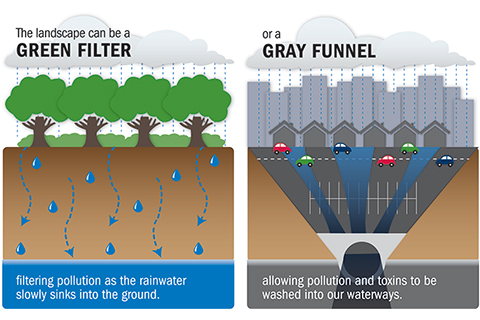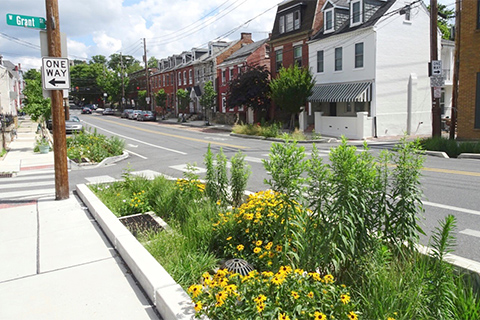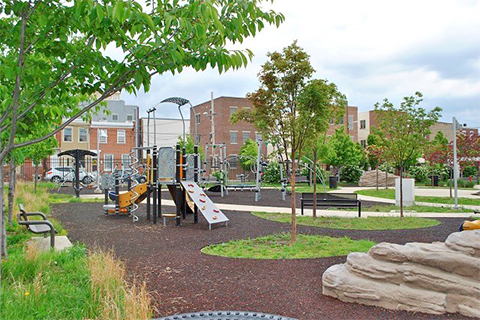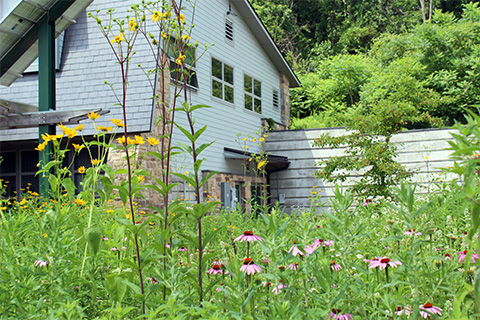Green infrastructure has become a popular term. You may hear it often in conversations regarding flooding, public parks, stormwater runoff management, pollution, and erosion.
It can be integrated into local communities, especially those experiencing climate change impacts. But just what do we mean when we say green infrastructure?
Defining Green Infrastructure

For starters, it’s natural. Think planting trees and restoring wetlands rather than building water treatment plants.
Green infrastructure is defined as a network of natural or semi-natural systems that manage stormwater by reducing the rate and volume of water.
It’s an approach to managing water from rainfall that mimics the natural water cycle. Green infrastructure can reduce runoff and help to clean the water.
By comparison, grey infrastructure involves manmade engineered systems of pipes, reservoirs, and treatment facilities that convey stormwater runoff away from sites to local waterways. It does not reduce the volume of water nor in most cases improve its quality.
Benefits of Green Infrastructure

Green infrastructure has many benefits, including improving livability of communities and a high return on investment. Grey infrastructure is singularly focused on conveying stormwater.
Among its features, green infrastructure is more pleasing to look at and a great addition to public parks, including opportunities to educate visitors and provide benefits to wildlife and pollinators. Some additional benefits of green infrastructure:
- Mitigates the impacts of climate change
- Enhances community resiliency
- Improves water quality
- Creates/improves habitat
- Nice to look at
- Cost effective
- Reduces flooding
- Improves air quality
- Can be used to mitigate federal and state water quality regulatory requirements
- Creates opportunities for leveraging funding sources
Green Infrastructure in Public Parks

Green infrastructure can be designed throughout a community and is a great addition to public park spaces -- as it is especially helpful that they are publicly owned and maintained.
Green infrastructure does require specialized maintenance. An operation and maintenance plan is a critical component of the installation and determines the effectiveness of the project to function properly.
Some common types of green infrastructure used in park and conservation projects:
- Rain garden planted with native plants
- Pervious pavement that allows rainwater to move through to an underlying reservoir
- Tree plantings
- Enhanced streamside (riparian) areas
- Native warm season grass meadow to stabilize soil and control erosion
- Cisterns
- Replanting forest areas
- Vegetated swales as compared to curb and gutter
- Natural infiltration basins that store stormwater until it moves into the ground
- Floodplain and wetland restoration
- Green roofs
Municipal and community leaders are beginning to understand that green infrastructure can deliver numerous economic and environmental benefits. Among other things, that means more parks and open space that improve everyone’s well-being.
Green Infrastructure at Home

There is evidence that green infrastructure helps increase property values.
There are plenty of ways green infrastructure can be used on a smaller scale as well, including in our own homes.
Some ideas include:
Clean streams and watersheds are a benefit to us all, and anyone who owns land -- whether a small parcel in town or some rural acres -- has an opportunity to act on that land.